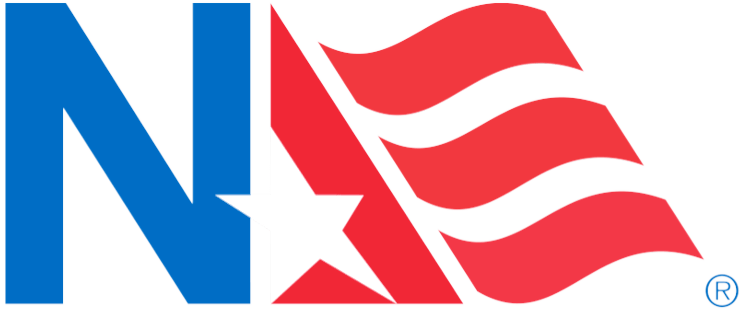The first attribute you will need to know is how much horsepower (HP) is needed for the specified application (eg: 5HP, 10HP, 20HP, etc.). Proper selection of the HP rating for the application will ensure that the motor operates satisfactorily. A key component to correct HP rating is the torque. Locked rotor torque, also called start-up torque, is recommended to be 140% or greater of the rated torque to allow for proper starting of the motor under load. A service factor (typically 1.15 but may vary) is a multiplier that can be applied to the HP rating of the motor to indicate the available overload capacity of the motor for intermittent periods of operation (eg: 10 HP x 1.15 = 11.5 HP).
The second attribute you will need to know is the necessary speed of the application. Speed is specified in revolutions per minute (RPM) for motors. Motors are classified by their synchronous speeds which are commonly 3600, 1800, 1200, and 900 RPM. Alternating current (AC) motors have some losses known as slip which will reduce the synchronous speeds of the motors to their asynchronous or rated speeds (eg: 3550, 1750, 1150, and 850 RPM).
The third attribute you will need to know is the voltage and phase of the electrical system in which the motors will be installed. Electrical systems will be either single-phase or three-phase in configuration. Single-phase configurations will have voltage ratings of 120, 208, or 240V typically. Three-phase configurations will have voltage ratings of 208, 230, or 460V typically. Single-phase is more common in residential and light commercial applications (eg: fans and compressors). Three-phase is more common in commercial and industrial applications (eg: pumps, conveyors, fans, and compressors).
The fourth attribute you will need to know is the frame size and mounting configuration of the motor. National Electrical Manufacturers Association (NEMA) has established detailed standard motor dimensions to allow for flexibility and interchangeability between manufacturers. There are frame designations for 2 digit frame designs (eg: 48, 56, or 56C) and 3 digit T Frame designs (eg: 143T, 286TS, or 326TC). Frames without a suffix are considered standard frames and will typically be a rigid or with feet mounting configuration. Motors with a suffix of C represent motors that have a mounting flange included on the motor. These motors can be supplied with feet or without feet (round body or footless) designs and are typically directly coupled to the equipment which it is installed on. Motors that have a TS designation indicate that the motor is a short shaft and is designed for direct coupled applications. This TS configuration is standard for motors in the 3600 RPM speed configuration from 284TS and larger. The TS configuration is also available for 1800 and 1200 RPM motors of the 284T frame size and larger. This may be available through stock or modification.
Another attribute to consider is the locations of the terminal box. Motors typically have a terminal box location on the left side of the motor when viewed from the shaft or drive end of the motor. This terminal box location is known as F1 mounting. There are applications in which require the motor to have the terminal box located on the right side when viewing from the shaft or drive end of the motor. This configuration is known as F2 mounting.
Modifications such as TS shafts, F2 Mounting, or addition of a C-Flange may lead to additional costs and lead time for obtaining a motor.
The fifth attribute that you need to consider is the type of enclosure the motor is built in. Open Drip-Proof (ODP) enclosures allow the free exchange of ambient air with the internal air of the motor. These motors are designed to be placed in dry and clean environments to ensure proper reliability and operation of the motor. ODP motors are typically indoor applications or in buildings. Totally Enclosed Fan Cooled (TEFC) enclosures are designed with external cooling fans that provide air flow over the frame of the motor to assist in the exchange of hot air from the motor to the ambient air around the motor. TEFC motors are designed to be indoors or outdoors and can withstand water splashing on them as well as dusty or dirty environments in which they will reliably operate. TEFC motors are also available to operate in a hazardous atmosphere with the use and design of special mechanical designs.
Four Things to Know When Consulting Your Motor Vendor
Once you know the basics (horsepower, RPM, voltage & phase, frame size & configuration, and enclosure), you can request several different documents from your motor vendor to help you finalize your selection – and provide information for the end-user if he or she will be someone else. These might include:
- Performance Data Sheet – lists all specifications (electrical performance) you need to know about an electric motor
- Dimensional Drawings – eliminate costly errors due to size differences between what your application needs and what the motor vendor provides
- List of Features & Benefits – explains the motor’s electrical and mechanical features, and help you to make an accurate comparison between different manufacturers’ products
- Installation, Operating, & Maintenance Manual – provides you with all necessary care-and-feeding instructions for the motor. The information should cover: storage, transport, mounting, balancing, re-greasing the bearings, operating sound levels, and other technical information not found elsewhere.
Knowing what to ask for and what to expect from a motor vendor will help ensure that you get the right motor for your power unit. If you are selling the power units, the ability to provide your customers with all necessary intelligence about the equipment they are buying adds real value to the transaction.


